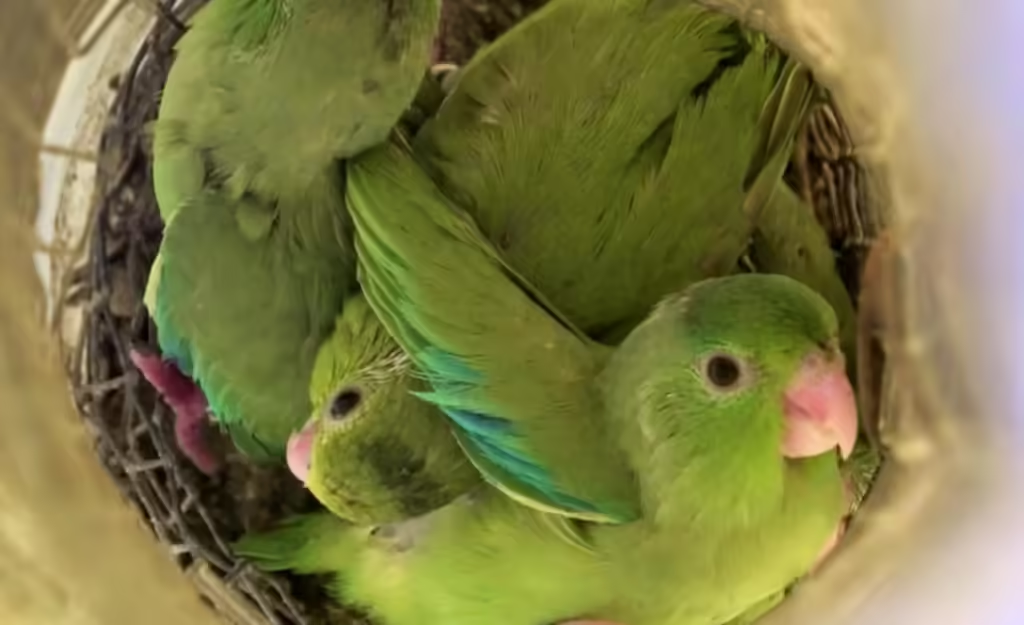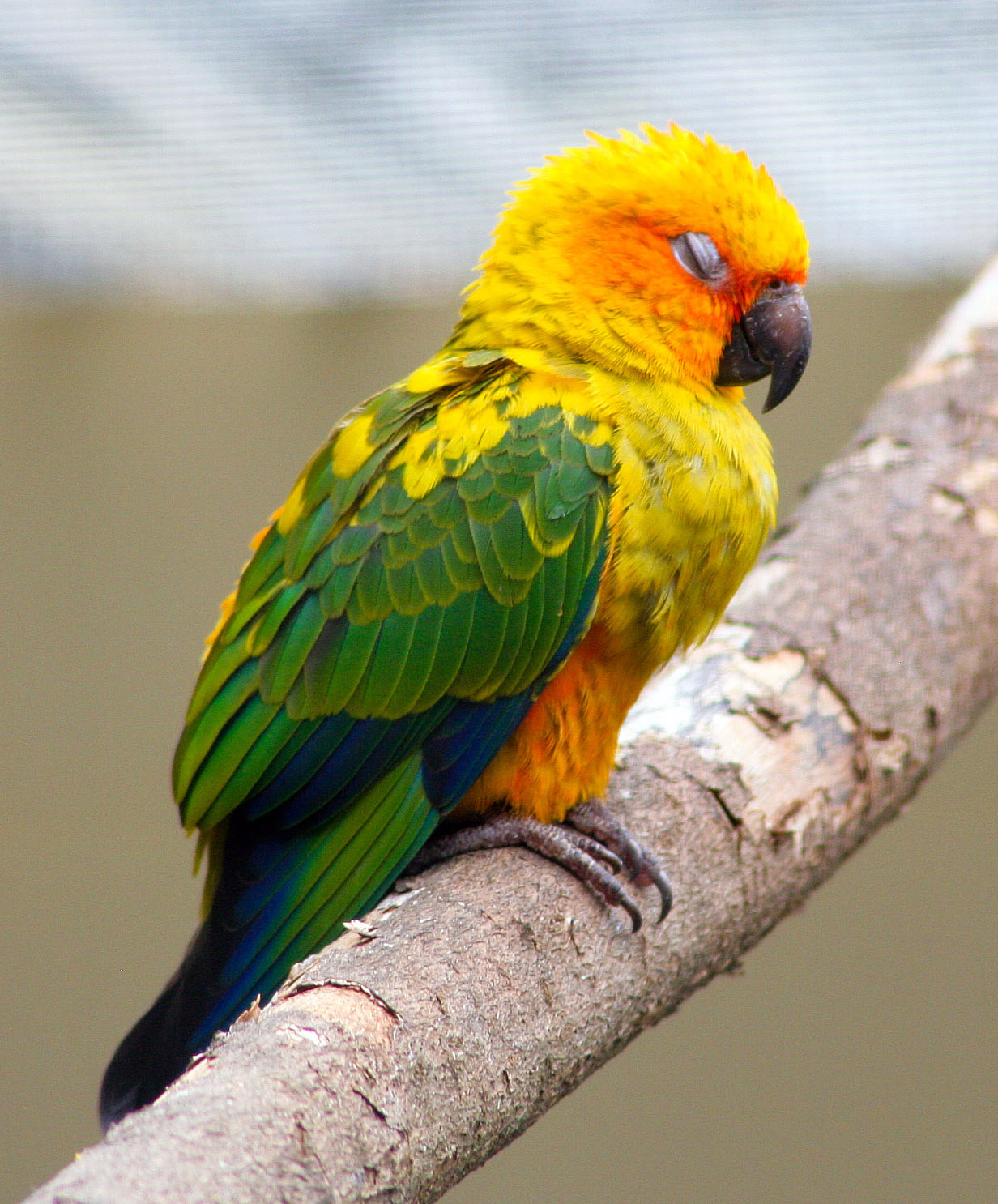Table of Contents
Train Your Baby Parrot
Training your baby parrot can be a blast for you and your feathered buddy. But timing and proper nutrition are key to getting off on the right foot.
Timing and Weaning
Timing is everything when it comes to training a baby parrot. Baby parrots shouldn’t leave the breeder until they’re fully weaned, usually around 12 weeks old (Parrot Forums). At this stage, they should munch on a mix of pellets, fresh fruits, and veggies.
Weaning means your baby parrot has gained enough independence and is ready for training. Don’t buy an unweaned baby parrot unless you’re a pro at hand-feeding baby birds. Wait until the baby has enough feathers to keep warm and get those crucial antibodies from its parents to boost its immune system (Pets Stack Exchange).
Diet and Nutrition
A good diet is essential for your baby parrot’s growth, brain development, behavior, and overall health. A balanced diet, proper weaning, hydration, and regular vet check-ups are crucial.
Here’s what to include in their diet:
| Food Type | Examples |
|---|---|
| Pellets | Commercial parrot pellets |
| Fresh Fruits | Apples, bananas, berries |
| Vegetables | Carrots, spinach, broccoli |
| Hydration | Fresh, clean water daily |
A balanced diet not only keeps them healthy but also makes them more eager to learn. For more tips on training, check out our articles on parrot training, target training parrots, and clicker training for parrots.
By making sure your baby parrot is fully weaned and well-fed, you’re setting the stage for successful training and a happy, healthy companion.

Positive Reinforcement Training
Training our baby parrot using positive reinforcement is both effective and kind. This method focuses on rewarding good behavior to encourage repetition, making the training fun for both the parrot and the trainer.
Reward-Based Techniques
Positive reinforcement is the go-to for parrot training because it skips the negative stuff and instead praises good behavior. Treats are a popular choice, helping to create positive vibes with a person or place during training sessions (Birdy Blog).
The basic idea is simple: offer a reward that the bird wants, likes, or enjoys. The bird is then more likely to repeat the behavior that got them the treat. This method is not only effective but also easy for trainers to manage (Exotic Direct).
Finding the right reward for our parrot is key, and it doesn’t always have to be food. Mixing up rewards can keep training sessions interesting and successful. Here’s a quick look at common rewards used in positive reinforcement training:
| Reward Type | Examples |
|---|---|
| Food Treats | Seeds, nuts, small fruit pieces |
| Toys | Bells, mirrors, ropes |
| Social Rewards | Praise, petting, playtime |
For more on specific techniques, check out our guide on clicker training for parrots.
Establishing Cues
Cues are signals that tell our parrot what we want them to do. These can be verbal commands, hand gestures, or other signals like a wink or specific movements.
To set up effective cues, it’s important to use consistent signals and back them up with rewards. Essential tools for parrot training include the bird’s favorite treat, a clicker, and a target stick. These tools help us reinforce good behavior by rewarding it and ignoring the stuff we don’t want.
Here are some common cues and tools used in parrot training:
| Cue Type | Example |
|---|---|
| Verbal | “Step up”, “Come here” |
| Hand Gestures | Pointing, open palm |
| Tools | Clicker, target stick |
For advanced techniques, you can explore our section on target training parrots and teaching parrots tricks.
We can create a structured and fun training environment for our baby parrot using positive reinforcement and clear cues. This helps teach new behaviors and strengthens the bond between us and our feathered buddy.
Raising Well-Behaved Baby Parrots
Getting your baby parrot to behave well isn’t rocket science, but it does take some know-how. Let’s dive into why early socialization and setting boundaries are game-changers for your feathered buddy.
Early Socialization
Early socialization is a big deal for baby parrots. During the Honeymoon Phase, these little guys are curious explorers. They don’t have much learning history yet, so it’s the perfect time to shape their behavior with positive reinforcement.
This phase is all about giving your baby parrot new experiences. Pair these experiences with positive vibes, and avoid any forceful methods that might limit their choices. This helps them grow into well-adjusted adults and keeps those pesky behaviors like the Nippy Stage and the Terrible Twos at bay (Learning Parrots).
Here are some fun activities to help with early socialization:
- Let them explore different environments
- Introduce them to a variety of people
- Expose them to different sounds and sights
For more tips on training, check out our article on clicker training for parrots.
Setting Boundaries
Setting boundaries is just as important as socialization. Start early with clear rules, and you’ll have a well-behaved parrot as they grow up (Learning Parrots).
Here are some key points to keep in mind:
- Consistent Training: Be consistent with your training. Regular practice sessions and sticking to the same rules help your parrot understand what’s expected.
- Positive Reinforcement: Use treats and praise to encourage good behavior. Avoid forceful methods—positive reinforcement makes your parrot want to make good choices.
- Appropriate Interactions: Pay attention to how you interact with your parrot. Gentle handling and respectful treatment build trust and cooperation.
Need more help? Check out our articles on training parrots not to bite and perch training your parrot.
By focusing on early socialization and setting clear boundaries, you’ll help your baby parrot grow into a well-behaved and happy companion.
Advanced Training Techniques
Shaping Behaviors
Training baby parrots can be a fun adventure, and shaping behaviors is a big part. This method involves guiding our feathered buddies step-by-step to perform a desired action by rewarding them for each small move toward the final goal. For example, if you want your Alexandrian parrot to wave, you start by rewarding it for just lifting its foot. Gradually, you only give treats when the foot goes higher and, eventually, when it waves (BirdTricks).
Here’s a simple way to do it:
- Decide what behavior you want to teach.
- Break it down into small, easy steps.
- Reward each step until the final behavior is achieved.
For more tips on shaping behaviors and other training methods, check out our section on parrot training.
Tricks and Complex Commands
Once your baby parrot has the basics down, it’s time to move on to tricks and more complex commands. This advanced training strengthens your bond and keeps your parrot mentally sharp and entertained. Training tricks takes time and patience, but it’s worth it.
Some popular tricks and commands include:
- Wave: Teaching your parrot to wave is a fun way to show off its smarts.
- Speak: Getting your parrot to mimic words and phrases can be thrilling. For more tips, visit our article on train parrot to speak.
- Flight Recall: Training your parrot to fly back to you on command is both impressive and a great safety measure. Learn more in our parrot flight recall training.
| Trick/Command | Description | Difficulty Level |
|---|---|---|
| Wave | Parrot lifts its foot and waves. | Easy |
| Speak | Parrot mimics words/phrases. | Moderate |
| Flight Recall | Parrot flies back on command. | Hard |
Keep training sessions short and sweet, always ending positively to keep your parrot excited and eager to learn. For more ideas on teaching tricks, visit our section on teaching parrots tricks.
By using these advanced training techniques, you’ll help your baby parrot grow into a well-behaved, happy, and mentally stimulated companion. For more tips on safely training your parrot, check out our articles on clicker training for parrots and target training parrots.

